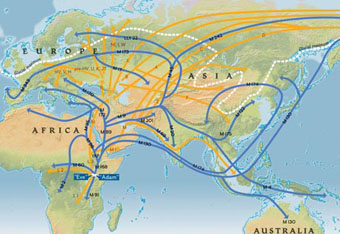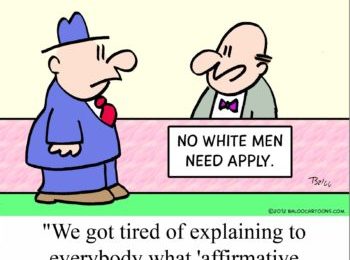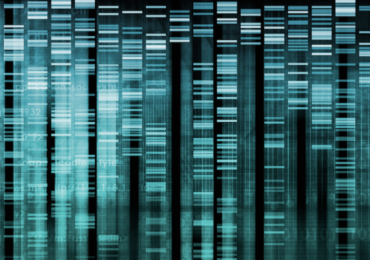 PreCommentary by Dr. David Duke — The latest, ground-breaking, anthropology research is causing quite a storm. The most popular theory is that modern man, Homo Sapiens Sapiens (modern man) evolved in Africa and then spread throughout the world. On the finding that Europeans had a small presence of genes also shared by Neanderthals, it was thought that Europeans mixed somewhat with Neanderthals as Europeans had these genes but Africans did not.
PreCommentary by Dr. David Duke — The latest, ground-breaking, anthropology research is causing quite a storm. The most popular theory is that modern man, Homo Sapiens Sapiens (modern man) evolved in Africa and then spread throughout the world. On the finding that Europeans had a small presence of genes also shared by Neanderthals, it was thought that Europeans mixed somewhat with Neanderthals as Europeans had these genes but Africans did not.
Now it turns out that the evidence is very powerful that Europeans did not breed with Neanderthals, and the genes were simply genetic artifacts from ancestors of both Neanderthals and European (and Asians). That means about 500,000 years ago when Neanderthals Africans were already divided between those which would go on to evolve into the modern races of Europeans and Asians, and those who would go on to evolve into modern Africans.
Once again the deep diversity created by geographic separation and eons have shown to be at work in humans just as the biodiversity in the what we call the animal kingdom. This wonderful diversity of mankind is not a social construct but an evolutionary fact that explains the great diversity of culture and ethnic personality all over the world. Just as we strive to preserve biodiversity in plants and animals, we must strive to preserve this rich diversity in humanity. Furthermore if we don’t recognize these deep differences of evolution between the expressions of humanity we will be doomed to perpetual war and conflict. People are as they are because over thousands of years they evolved with a common gene pool that gave them a societal and cultural harmony. When nations experience massive immigration of starkly different people into the same living space, history shows that it leads almost inevitably to conflict and strife, war and civil war. Science everyday validates the human diversity that exists and that all peoples have the right to preserve and celebrate.
A new scientific study—which refutes the allegation that modern non-Africans have Neanderthal DNA caused by interbreeding—has revealed the rich diversity of human types going back half a million years or more and has shown that Europeans did not evolve from sub-Saharan Africans, or vice versa.
The study, published by scientists at Cambridge University, showed that genetic traits shared between humans and Neanderthals are more likely from a shared pre-ancestry rather than interbreeding.
More importantly, the study showed that speciation occurred at least 500,000 years ago, and that sub-Saharan Africans evolved separately and simultaneously from Europeans and Asians, is this did occur in the continent which became Africa. Even if the “Out of Africa” “Eve” theory is correct, Africa held diverse inhabitants long before modern man emerged with clear differences between North Africans which went on to become Europeans and Asians, and South Africans who went on to become what is commonly referred to as the African race.
Dr Andrea Manica, who led the study, said: “To me the interbreeding question is not whether there was hybridisation but whether there was any hybridisation that affected the subsequent evolution of humans. I think this is very, very unlikely.
“Our work shows clearly the patterns currently seen in the Neanderthal genome are not exceptional, and are in line with our expectations of what we would see without hybridisation.
“So, if any hybridisation happened then it would have been minimal and much less than what people are claiming now.”
A previous study in 2010 suggested that interspecies liaisons near the Middle East resulted in Neanderthal genes first entering humans 70,000 years ago.
Modern non-Africans share more with Neanderthals than Africans, supporting the claim that the mixing occurred when the first early humans left Africa to populate Europe and Asia.
The existence of a 500,000-year-old shared ancestor that predates the origin of Neanderthals provides a better explanation for the genetic mix, according to the new study.
Diversity within this ancestral species meant that northern Africans were more genetically similar to their European counterparts than southern Africans because of their evolutionary geographic separation.
“The idea is that our African ancestors would not have been a homogeneous, well-mixed population but made of several populations in Africa with some level of differentiation, in the way right now you can tell a northern and southern European from their looks,” Dr Manica said.
“Based on common ancestry and geographic differences among populations within each continent, we would predict out of Africa populations to be more similar to Neanderthals than their African counterparts – exactly the patterns that were observed when the Neanderthal genome was sequenced, but this pattern was attributed to hybridisation.
“Hopefully, everyone will become more cautious before invoking hybridisation, and start taking into account that ancient populations differed from each other probably as much as modern populations do.”
The study was published in the journal Proceedings of the National Academy of Sciences (PNAS).



